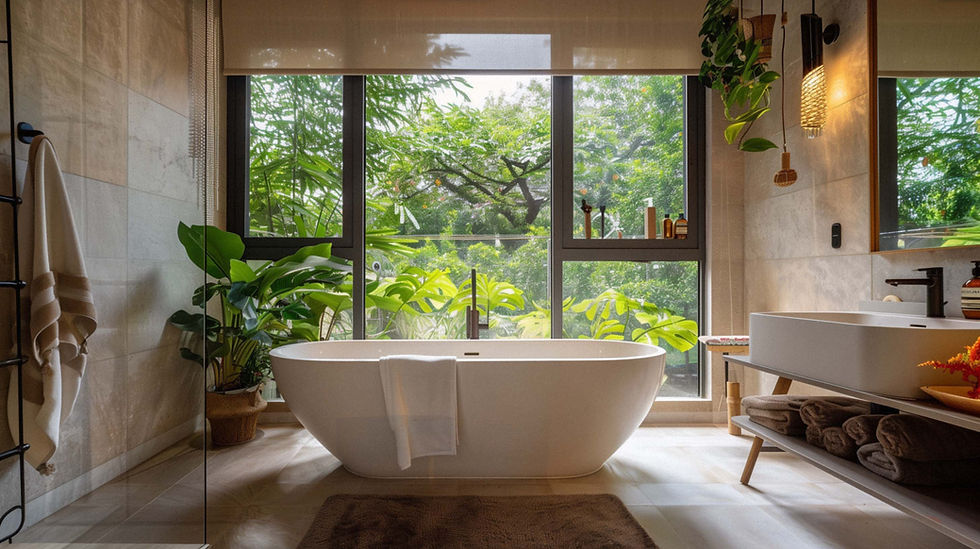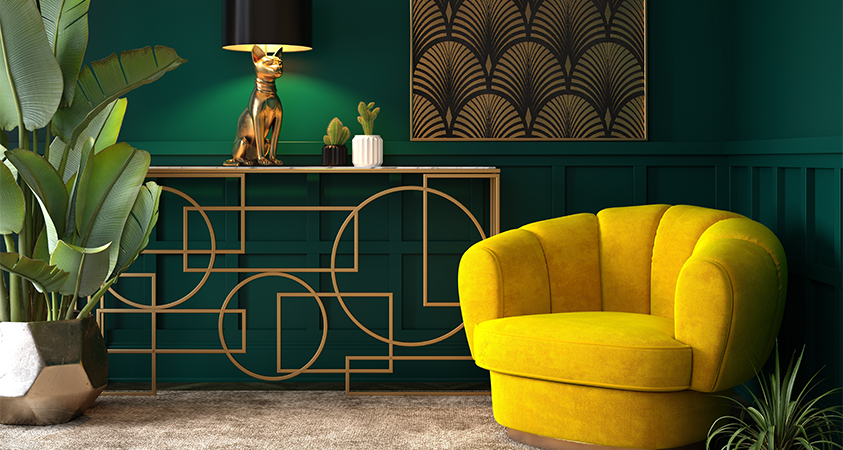The Art of Quiet Luxury Interiors
- Marieke Rijksen

- Mar 31
- 4 min read
There’s something undeniably appealing about a home that whispers rather than shouts. That’s the essence of quiet luxury interiors – a design approach that favours refined simplicity, impeccable craftsmanship, and timeless elegance over fleeting trends and flashy displays of wealth.
It’s not about stripping everything back to soulless minimalism, nor is it about stuffing a room with designer labels just for the sake of it. Instead, it’s a balance of restraint and indulgence, where every piece feels curated, meaningful, and effortlessly chic.
I’ll admit, I’ve had my moments of maximalist impulse – who hasn’t fallen for a statement wallpaper or a too-good-to-pass-up vintage find? But the older (and hopefully wiser) I get, the more I appreciate interiors that feel calm, sophisticated, and built to last.
That’s exactly what quiet luxury offers. It’s about creating a space that feels like a sanctuary – where materials, textures, and colours work in harmony to evoke a sense of effortless elegance.

What Defines Quiet Luxury Interiors?
At its core, quiet luxury isn’t about how much you spend – it’s about what you choose to invest in. It prioritises quality over quantity, craftsmanship over convenience, and timeless appeal over passing fads.
If an object or material has a story to tell – whether it’s a hand-thrown ceramic bowl, a perfectly worn-in leather armchair, or a linen curtain that softens the daylight – it belongs in a quiet luxury home.
There’s a definite less is more philosophy at play here, but let’s be clear – this isn’t minimalism in its starkest form. While a minimalist interior might pare everything down to its bare bones, quiet luxury allows for warmth, texture, and personal touches – just in a carefully considered way. Think sumptuous fabrics, muted tones, soft lighting, and well-crafted furniture that ages gracefully.
If you’re intrigued by the idea of decorating with emotion in mind, you might enjoy my post on dopamine décor – though quiet luxury is essentially its calmer, more introspective cousin.

The Role of Colour in Quiet Luxury
Colour in quiet luxury interiors is subtle, sophisticated, and deeply intentional. You won’t find brash neons or overly trendy hues here. Instead, the palette leans towards soft neutrals, warm greys, muted earth tones, and the occasional deep accent for depth.
Neutrals like oatmeal, ivory, and greige form a timeless foundation.
Soft taupes, warm browns, and smoky greys add a sense of quiet sophistication.
Muted greens, deep blues, or dusky aubergines can introduce just enough contrast without overpowering the space.
The key is to create an environment that feels serene and cohesive – allowing materials and textures to do the talking. If you're interested in how colour influences mood, this post on colour psychology in interiors is worth a read.

Materials and Textures That Elevate the Look
If there’s one thing quiet luxury doesn’t compromise on, it’s materials. The emphasis is on natural, high-quality finishes that look even better with time. Plastics and mass-produced synthetics? Not so much. Instead, it’s about layering materials that feel as good as they look:
Stone (travertine, marble, limestone) for surfaces that exude timeless beauty.
Wood (walnut, oak, ash) for warmth and natural character.
Textiles (cashmere, linen, wool, bouclé) to add softness and depth.
Handcrafted ceramics, artisan glass, and aged metals for those subtle but meaningful details.
Texture is key here. A room might be monochrome, but if you balance the roughness of raw linen with the smoothness of polished wood – or contrast a matte plaster wall with a glossy ceramic vase – it instantly feels layered and rich.
For more on how texture plays a vital role in interior design, I’ve explored it in depth in this post on texture layering.

Furniture and Décor The Art of Curation
Furniture in a quiet luxury home is thoughtfully chosen, well-crafted, and built to last. There’s an emphasis on understated statement pieces – yes, that’s a contradiction, but bear with me. The idea is that a sculptural sofa, a beautifully grained wood table, or a perfectly proportioned armchair should be striking in its craftsmanship, not its ostentation.
Décor, too, is all about restraint and purpose. Instead of filling every surface with trinkets, opt for fewer, better pieces:
A hand-thrown ceramic vase rather than mass-produced accessories.
Bespoke or vintage lighting that adds character.
A curated selection of books and art rather than cluttered shelves.
The goal is to create a space that feels lived-in yet effortlessly elegant – as if everything has been carefully chosen over time rather than bought in a single shopping spree.

Quiet Luxury vs. Minimalism What’s the Difference?
Both styles embrace a less-is-more approach, but quiet luxury is the more inviting, textured, and emotionally warm sibling. Minimalism often leans towards austerity, whereas quiet luxury allows for softness, layers, and a sense of indulgence.
Where minimalism might feature a stark white space with sparse furnishings, quiet luxury would introduce natural linen curtains, a handcrafted ceramic lamp, and a plush wool rug – still restrained, but with a focus on comfort and craftsmanship.

The Future of Quiet Luxury in Interior Design
If the past few years have taught us anything, it’s that home should feel like a retreat from the chaos of the world. Quiet luxury isn’t just a passing trend – it’s a reflection of a broader shift towards mindful decorating, sustainability, and a focus on quality over quantity.
As we move away from disposable décor and fast interiors, the appeal of investing in timeless, well-made pieces that stand the test of time only grows stronger. In a way, quiet luxury isn’t about what’s new – it’s about what lasts.

Final Thoughts
If you’ve ever walked into a space and felt instantly calm – cocooned in warmth and quietly impressed by its effortless elegance – then you’ve experienced the magic of quiet luxury interiors. It’s about designing with intention, choosing quality over quantity, and creating a space that feels both sophisticated and deeply personal.





